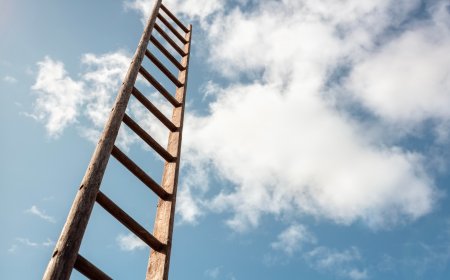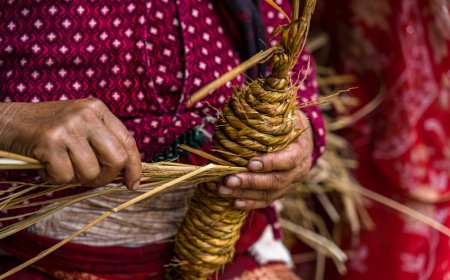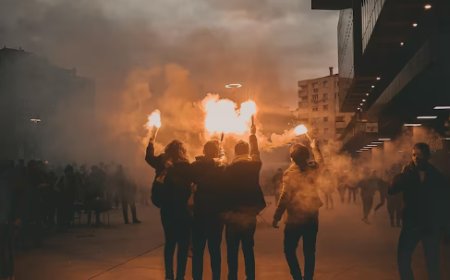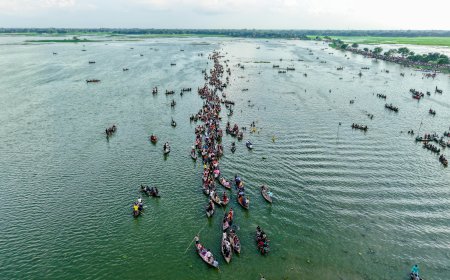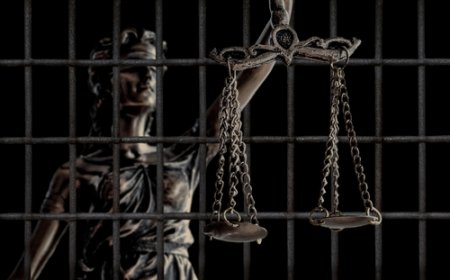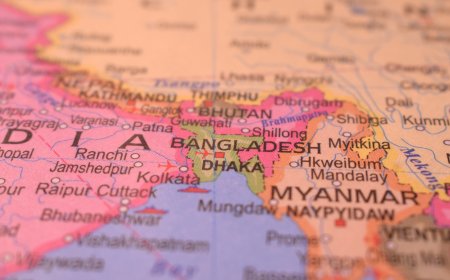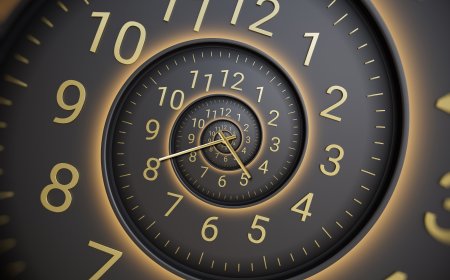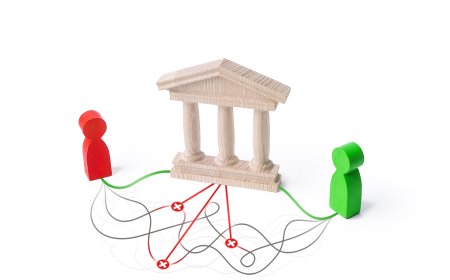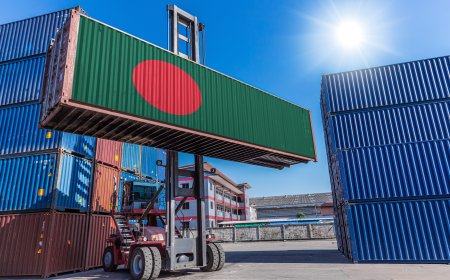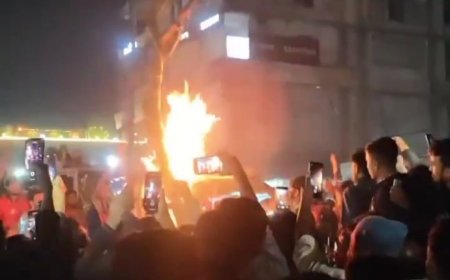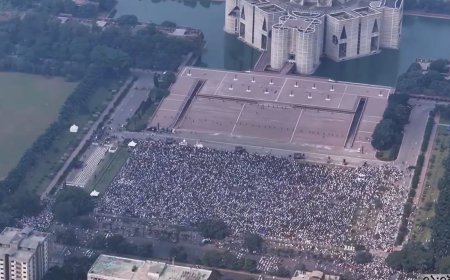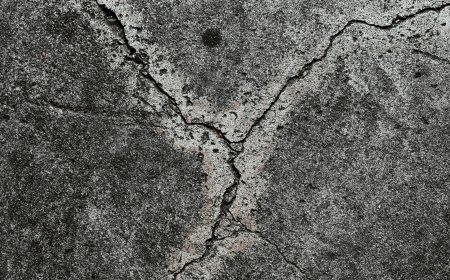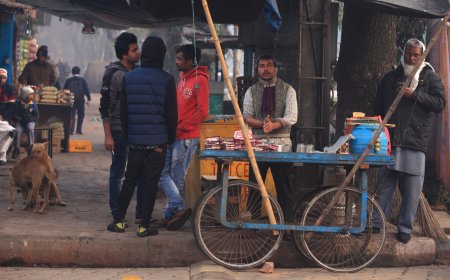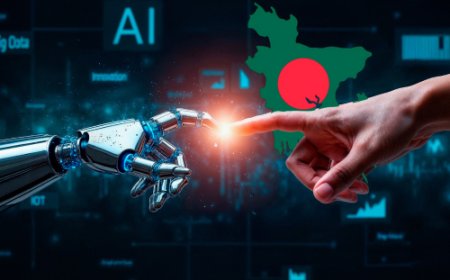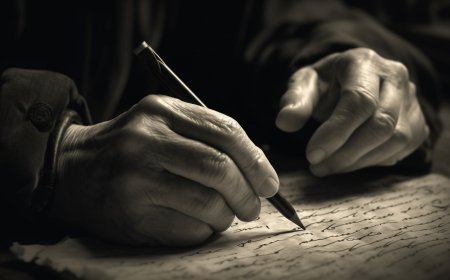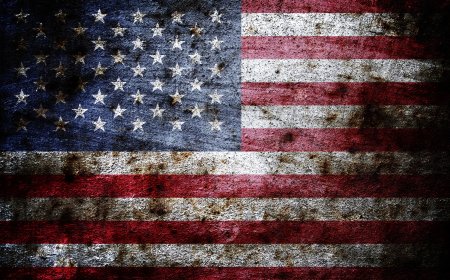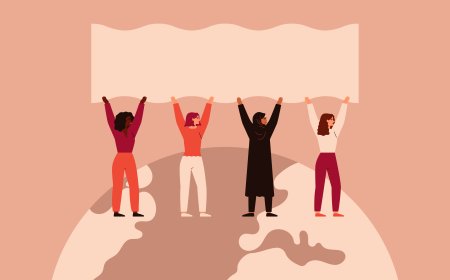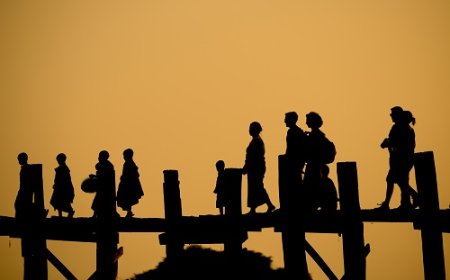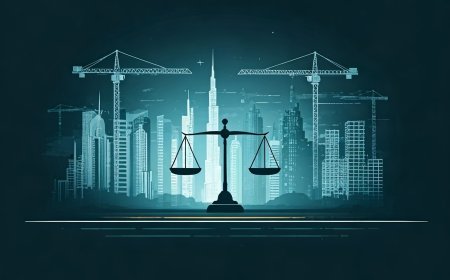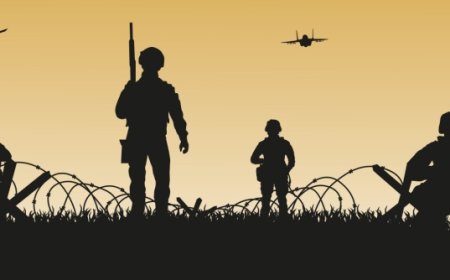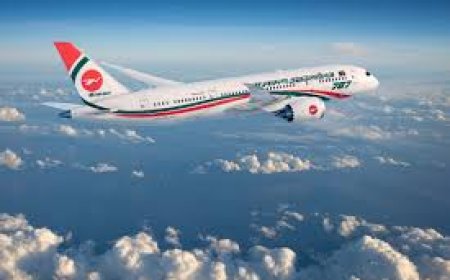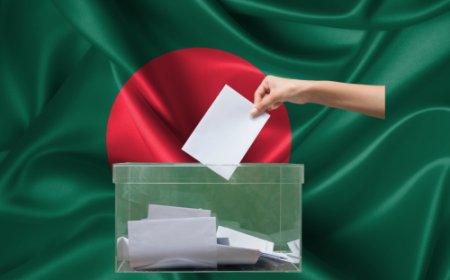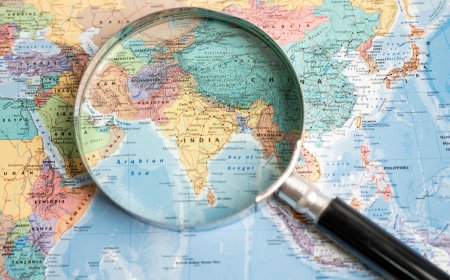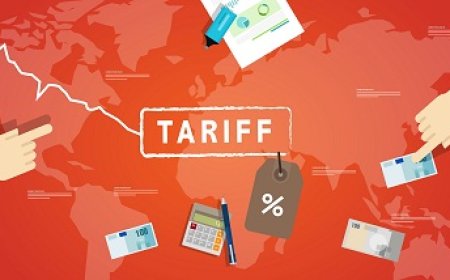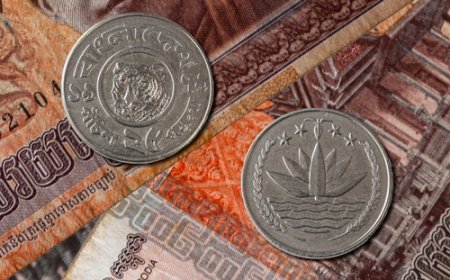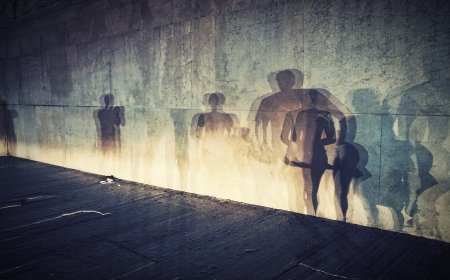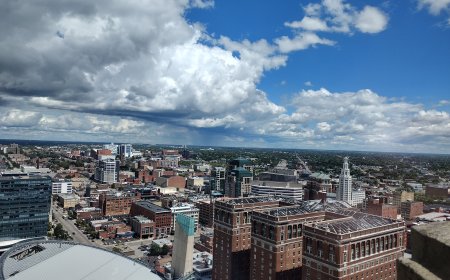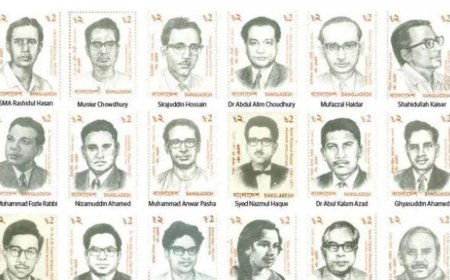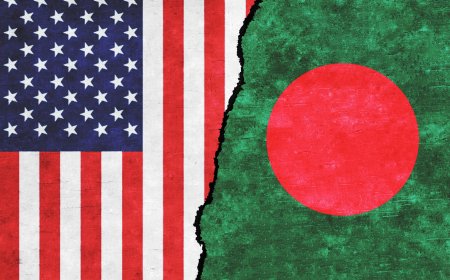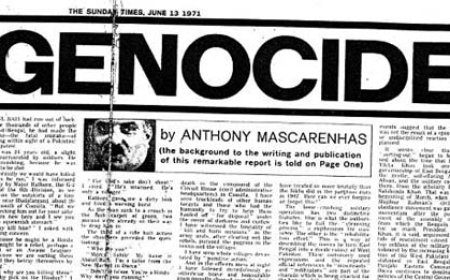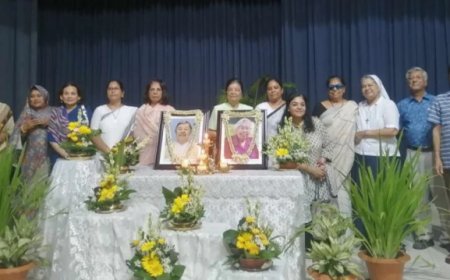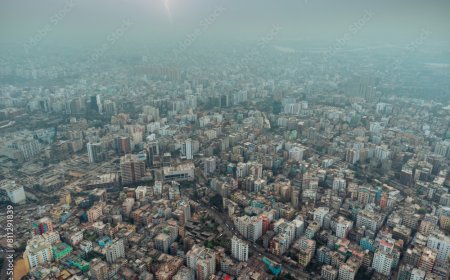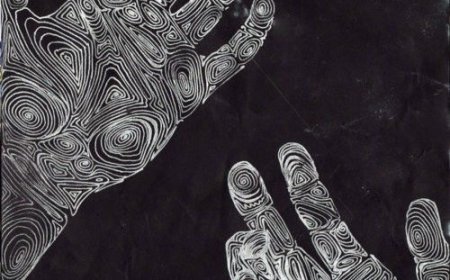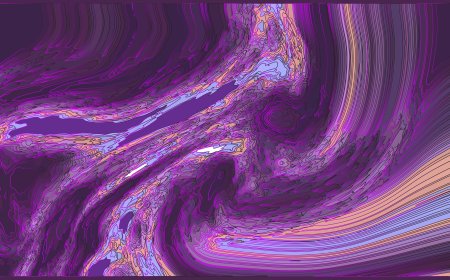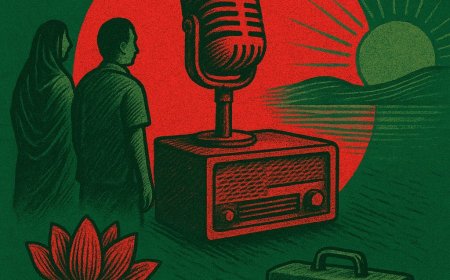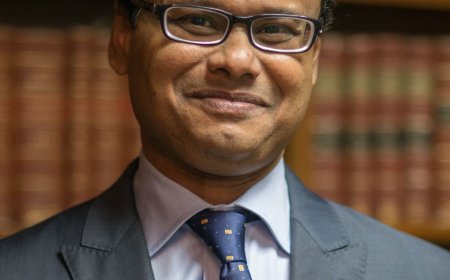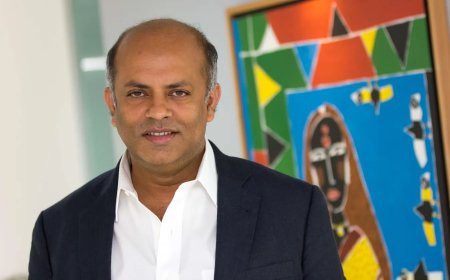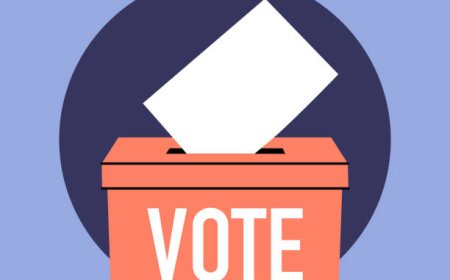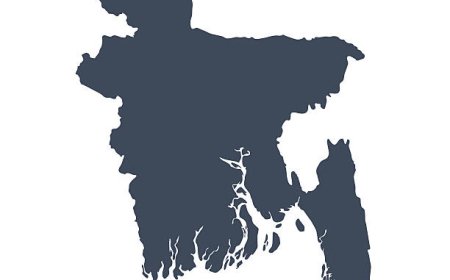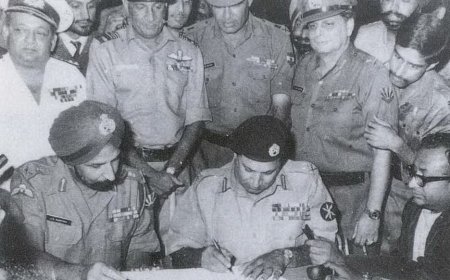Revisiting 1971: Divergent Histories and the Responsibility of Re-reading
1971 is not only the history of a time; it is the foundation of our national identity, which must constantly be re-read, understood, and preserved. Re-reading the Liberation War of 1971 in the context of the current times and its challenges is the need of the hour.
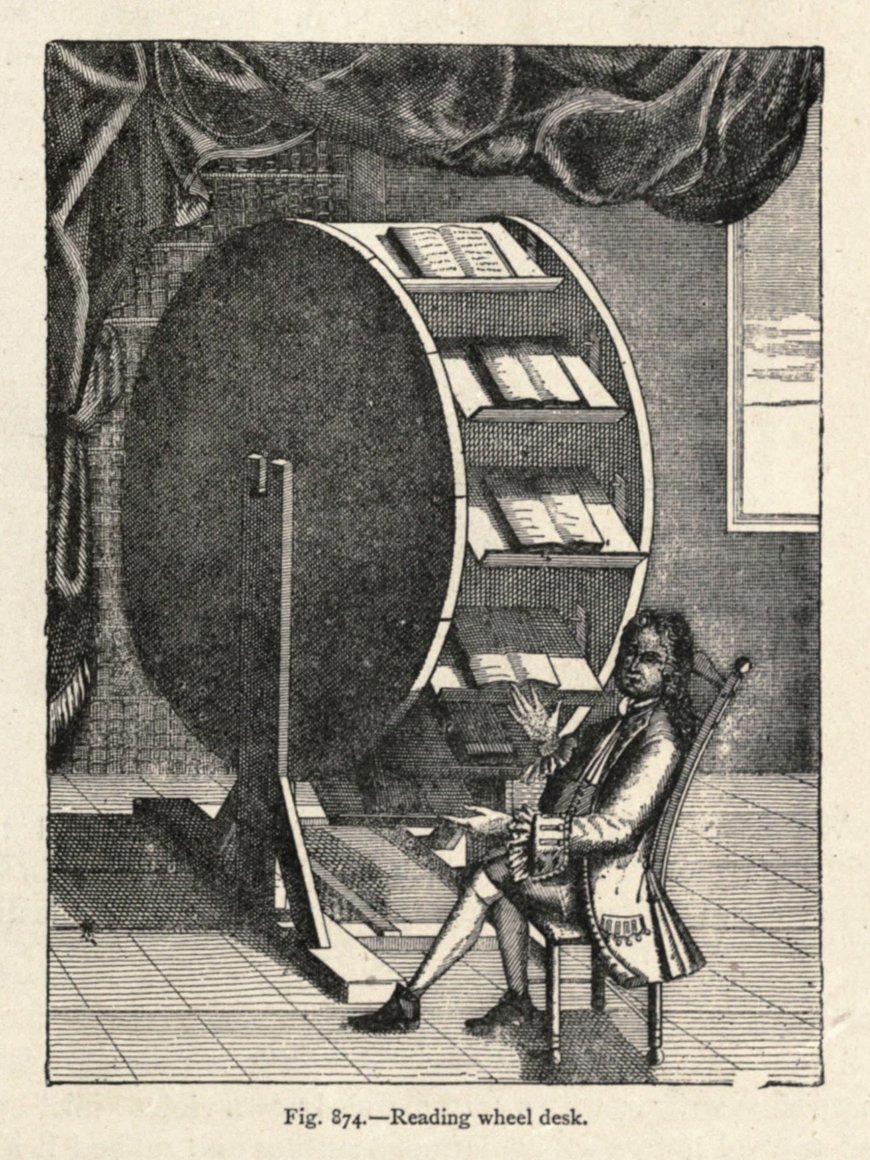
The Need to Re-read the History of 1971
The history of the Liberation War of 1971 today is not only a glorious chapter of the past, but also a weapon of politics and propaganda.
What the independence struggle of 1971 was, and how it unfolded -- these basic questions themselves have become subject to distorted interpretations due to partisan and purpose-driven narratives.
Behind this lies the long-standing crisis of self-identity among Bengali Muslims (I have written separately on this subject), which has made the study of history both complex and contentious.
On social media, we see the surge of Jamaat-inspired propaganda, the Awami League’s monopolistic and blindly eulogistic reading of history, the BNP’s fragmented nationalist construction that denies the long historical foundations of the Liberation War, and the incoherent stance of the left and the younger generation -- all of which together have placed 1971 at the center of political polarization.
In this reality, re-reading history has become urgent.
Without a fact-based, scientific, multidimensional, and objective study of history, the nation’s historical consciousness cannot develop in a healthy way. The control over narratives of history has always been tied to political power. Groups that construct historical accounts gain the opportunity to strengthen their own legitimacy and authority.
Exaggerated praise of Sheikh Mujibur Rahman’s undisputed leadership, the obscuring of other figures such as Tajuddin Ahmad, Syed Nazrul Islam, the role of the wartime provisional government, or the crucial contributions of the sector commanders, and the endless debate about who “declared” independence -- all these are examples of shaping history in a one-sided manner.
But history is not just written documents. It is also embedded in memory, in teaching and learning, in textbooks, in media, and in social practices. When a singular and distorted version of history is propagated, the self-confidence and national pride of the younger generation are diminished.
Moreover, if the crimes of the Liberation War -- genocide, rape, the killing of intellectuals -- are denied or misrepresented, such history withholds justice not only from the martyrs but also from the survivors and their families. Truth and moral responsibility, therefore, are inseparable from the study of history.
Hence, what is needed is a comprehensive and objective historiography, where the political, social, cultural, economic, and international dimensions of the Liberation War are all given due weight.
Recognition of Sheikh Mujibur Rahman’s indisputable leadership is essential, but alongside it must be discussions of the Mujibnagar government, the sector commanders, leftist politics, local resistance fighters, and the role of international support.
At the same time, a transparent and fact-based inquiry is needed into issues such as war crimes and genocide. Multiplicity must be introduced into historical education and the media so that the new generation learns not only of glory, but also of limitations, flaws, and
the processes of correction.
The War of Independence in 1971 was much more than an armed conflict. Its roots lay in political movements of the colonial period, in the discriminatory and repressive policies of the Pakistani state, in struggles to preserve cultural distinctiveness, and in sustained resistance against economic exploitation.
The Liberation War, therefore, cannot be seen merely through the lens of a single-party narrative. It is a multidimensional story of a
nation’s long struggle, sacrifice, and self-dedication. Re-reading that story afresh - objectively, factually, through research and analysis -- is today essential for the very existence and future of the nation.
Thus, the history of the Liberation War is not only the glory of the past; it remains the foundation of our national pride and identity. To protect that pride, we need truth- and research-based historiography, where emotion is accompanied by objective analysis. The Liberation War taught us the value of freedom, the greatness of sacrifice, and the indispensability of justice.
Therefore, to free this history from distortion or one-eyed perspectives and to re-read it objectively is not merely an academic task, but a national duty. Only through fidelity to truth and respect for glory will the history of the Liberation War remain alive and inspiring from generation to generation.
The Diversity of Political Narratives
Although the Liberation War of 1971 is the most glorious chapter of Bangladesh’s history, different political narratives have grown around it. These narratives are not just interpretations of history, but also reflections of political positions, strategies of power, and ideological outlooks. As a result, the true character and multidimensional nature of the war have often been obscured.
The Awami League’s narrative portrays the Liberation War as the culmination of a continuous political struggle from 1947 to 1971. In this version, Sheikh Mujibur Rahman is depicted as the sole leader and the principal architect of independence. The 7 March 7 speech is presented as the charter of liberation, and his leadership as the only foundation of independence.
While the Awami League’s and Mujib’s central roles in the struggle from 1947 to 1971 are undeniable, the weakness of this narrative is that it pays little attention to the contributions of other political forces or leaders, often marginalizing or ignoring them.
A conception of “a single-leader Liberation War” dominates, fragmenting the war’s real pluralistic character. Likewise, the positions of ethnic groups outside Bengali nationalism are absent from this account.
The BNP’s narrative, by contrast, emphasizes Ziaur Rahman’s role in opposition to Sheikh Mujibur Rahman’s leadership. Zia’s historic radio announcement from Chittagong on March 27 is highlighted as the key moment of the “declaration of independence,” while Mujib’s
contribution is deliberately obscured. The BNP frames the war mainly as a “national resistance under military leadership,” stressing military courage more than political leadership.
Though this counter-narrative reacts against the Awami League’s “single leadership thesis,” it too diminishes the political unity and mass-based character of the Liberation War. Military valor and a religion-based “Bangladeshi nationalism” are emphasized, narrowing the multidimensionality of the struggle.
Despite the presence of many freedom fighters in the BNP, the party’s repeated alliances with anti-independence forces and its patronage of them have made its position on 1971 weak and contradictory.
The leftist narrative explains the Liberation War as a class-conscious struggle. They saw it not merely as a war for national independence, but as an opportunity for social revolution.
Leftist parties, many of whom supported and participated in the war, highlight their roles in guerrilla warfare, organizational support, and building local resistance. Yet some left groups took ambivalent or even pro-Pakistani stances, particularly pro-China factions who often claimed to remain “neutral.”
As a result, though leftist narratives provided structural analyses of the war, they remained incoherent and had limited influence. While they criticized the Awami League’s middle-class leadership and limitations, the lack of consistent, independent, and realistic political positions left leftist politics abstract and inaccessible to ordinary people.
Jamaat-e-Islami and its allies have sought to mask or revise their anti-Liberation stance. For decades, they have tried to depict the Liberation War as a “misguided nationalist movement” or a conspiracy by foreign powers.
During the war, Jamaat openly supported Pakistan and participated through its auxiliary forces -- Razakar, Al-Badr, and Al-Shams -- in
killing, torturing, and looting. Afterwards, instead of admitting their crimes, Jamaat has tried to legitimize its position by distorting history and spreading confusion.
They question the leadership of the war, the number of martyrs, and the nature of the genocide, while implicitly seeking to revive the idea of a religion-based Pakistani unity.
In recent times, a new narrative has also emerged among the younger generation. The student leaders who rose after the 2024 mass uprising have not yet taken a clear position on the Liberation War. At times their discourse shows Jamaat-leaning tendencies, at others
the complete opposite. They give excessive importance to 1947, while neglecting the historical continuum from 1947 to 1971 -- because recognizing this requires acknowledging Mujib’s role. By hiding Mujib’s wartime contributions behind criticisms of his post-1971 leadership, their stance becomes ambiguous and confusing.
These divergent narratives demonstrate that the Liberation War of 1971 has become an enduring political battleground, where truth, history, and memory are subjected to partisan control.
The Awami League has monopolized the war as its property; the BNP has denied its broad foundations by privileging military leadership; leftist narratives reveal disunity and mistaken politics; Jamaat spreads confusion to conceal its crimes; and the younger generation has yet to form a coherent stance.
Consequently, the true history of the Liberation War remains obscured, generations are left confused, and the balance of national consciousness is distorted.
Therefore, it is essential to re-read the history of 1971 beyond partisan narratives and agenda-driven interpretations -- objectively, factually, and multidimensionally. Only then will the Liberation War regain its true stature, strengthen national unity, and allow the new
generation to learn genuine lessons from history.
The Real History and Context of the Liberation War: A Proposal for an Objective Historical Account
An objective account of the real history and context of the Liberation War needs to be written on a broad canvas. In this article, I have tried to present some key propositions and an outline of the framework in the form of theses, which will create space for deeper and broader discussions in the future.
One. The War of Independence of 1971 is the most important and proud chapter in the history of Bangladesh. However, if this war is seen only as an armed conflict of a specific period, its depth cannot be grasped. It was the culmination of a long political, economic, and cultural struggle, whose roots can be traced even before the partition of 1947.
Through the anti-British movement, a political consciousness had emerged, but after partition, because of the Pakistani rulers’ policies of discrimination, repression, cultural suppression, economic exploitation, and denial of political rights, East Bengal effectively turned into an internal colony. From this reality, step by step, Bengali national consciousness developed and the demand for an independent state grew stronger.
Two. At the time of the partition of 1947, there were several complex political, social, and religious reasons behind the Muslims of East Bengal supporting the Pakistan movement. India’s independence movement progressed through anti-British struggles, but it became
highly complicated when political and religious divisions began.
Although the Indian National Congress claimed to represent people of all religions, in reality its attention to and fair inclusion of the Muslim community was limited. It was during this time that the Muslim League rose, working with a narrow, religion-based political agenda for a separate Muslim state called Pakistan. The British rulers, following their “divide and rule” policy, deepened this division, while communal violence and riots further complicated the situation.
In this context, the Muslims of East Bengal felt that the Pakistan movement could ensure their security, political rights, and social recognition. They hoped that, compared to a united India, they would have greater opportunity to protect their rights in a separate state.
Thus, the idea of a religion-based state seemed attractive and viable to them for some time. However, it soon became clear that this expectation was an illusion -- merely creating a state on the basis of religion could not solve political, cultural, and economic problems.
Three. Therefore, after 1947 this initial support quickly began to decline. The centralized rule of Pakistan, dominated mainly by West Pakistan, showed disregard and discrimination towards the language, culture, and political autonomy of East Bengal. In government
offices, administration, and education, the dominance of West Pakistan reduced the rights and distinctiveness of the people of East Bengal, breaking their initial fascination with the Pakistan movement.
The experiences of linguistic, cultural, and economic exploitation inspired a distinct nationalist consciousness among East Bengal’s Muslims, which later became the political foundation of the Liberation War of 1971.
Hence, it is seen that the Initial enthusiasm for the Pakistan movement gradually dissolved when it failed to match political realities and experiences, and the people of East Bengal chose the path of asserting their autonomy and national identity.
Four. Although the state of Pakistan was created through the partition of 1947, the social, economic, and political inequalities between East and West Pakistan soon became clear. Ignoring linguistic and cultural differences, the Pakistani ruling elite tried to impose the
idea of a single national identity.
The direct consequence of this was seen in 1948 when Urdu was mooted as the only state language. Students and ordinary people took to the streets in protest, which culminated in the Language Movement of 1952.
The sacrifices of young people in this movement marked the beginning of the political awakening of the people of East Bengal and went down in history as the first major protest against the discriminatory character of the Pakistani state.
Five. After the Language Movement, the scope of political struggle widened further. In 1949, the Awami Muslim League (later Awami League) was formed, which gradually became the main political force of East Bengal. As an alternative to exclusive Islamist
politics, the Awami League built its position on secular, democratic, and Bengali nationalist foundations.
In the 1954 United Front elections, the Awami League, together with the Krishak Sramik Party and other parties, defeated the Muslim League. This was the first democratic victory of Bengalis against the Pakistani center.
But the ruling elite of West Pakistan could not accept this victory. They dissolved the United Front government and suppressed East Bengal’s demand for autonomy.
Thus, movements repeatedly arose against political repression, in which, alongside the Awami League, NAP, the Communist Party, and student and labor organizations also played active roles.
Six. In the 1960s, nationalist consciousness grew stronger. Under the leadership of Sheikh Mujibur Rahman, the Six Points declared in 1966 were a historic framework for Bengalis’ political and economic rights. The West Pakistani ruling elite labeled it a separatist plan and
adopted repressive measures.
In continuation of this, the Agartala Conspiracy Case was filed in 1968 against Sheikh Mujib and many other leaders. But under pressure from movements by students, workers, youth, and ordinary people, the government was forced
to withdraw the case.
In the 1969 mass uprising, Ayub Khan was toppled and Sheikh Mujib was given the title “Bangabandhu.” The Awami League’s absolute victory in the 1970 election created the political basis for Bengalis’ right to self-determination, but the Pakistani military rulers, instead of transferring power, engaged in various deceptions. This culminated in the massacre of March 25, 1971, which turned into a full-scale Liberation War.
Seven. At the center of this long struggle was Sheikh Mujibur Rahman, who emerged as the main bearer of the political aspirations of Bengalis. His historic speech on March 7,1971, united the nation in a common spirit, even though he did not directly declare independence there. Yet, the symbolic message and directives of the speech effectively encouraged the nation to prepare for war.
At the same time, students established the cultural symbol of the independence struggle by raising the flag of independence.
Undoubtedly, in the post-1971 period, Sheikh Mujibur Rahman and the Awami League displayed significant limitations,
weaknesses, failures, and in some cases misrule, which are discussed and documented in history. But it is also undeniable that before 1971, Sheikh Mujibur Rahman’s leadership step by step brought the people of East Bengal to the threshold of independence.
Therefore, his post-1971 role, in which he was not solely responsible, in no way diminishes his undisputed leadership and contribution before 1971. Sheikh Mujibur Rahman is undoubtedly a tragic actor in history -- he gave the nation independence, but in the end, he could not succeed in providing stable, democratic leadership to the independent nation.
Eight. On the night of March 25, Pakistani soldiers carried out mass killings and destruction across the country under the name of “Operation Searchlight.” Sheikh Mujib was arrested that night. Though historians have debated over this arrest, it is difficult to give a definite explanation of how much scope there was to take an alternative decision at that moment.
However, after this attack, the Liberation War spread throughout the country. While the Awami League led, the Communist Party, NAP, and other leftist forces also participated in the war. The Mujibnagar Government, formed in exile, took on the political responsibility of conducting the war.
Under the leadership of Tajuddin Ahmad, Syed Nazrul Islam, M. Mansur Ali, A.H.M. Qamaruzzaman, General Osmani, and the sector commanders, the war was organized. Students, peasants, workers, and people from all walks of life participated in the Liberation War.
Nine. The international context also deeply influenced the course of the Liberation War. India actively engaged from the beginning, both to manage the refugee crisis and to protect its regional strategic interests. While India certainly had its own security and geopolitical objectives, it stood beside the Liberation War by providing training, military support, and later direct involvement in the war. At this time, the Soviet Union sided with India, while the United States and China supported Pakistan. Thus, international diplomatic tensions added an important dimension to the equation of the Liberation War.
Ten. While we do not know and will never know the number of deaths in 1971, wartime documents, journalistic reports, and international observations provide sufficient evidence of the extent and horror of the genocide. At the same time, Jamaat-e-Islami and its paramilitary forces, Razakars, Al-Badr, and Al-Shams, actively collaborated with the Pakistani army. They directly participated in capturing, torturing, and killing freedom fighters, and especially in the killing of intellectuals. The planned killing of intellectuals on December 14, 1971, was a naked genocide, through which pro-Pakistani forces wanted to render future Bangladesh leaderless.
Eleven. After independence, Jamaat-e-Islami not only tried to hide its own role but deliberately engaged in distortion to destroy the true history of the Liberation War. Even today, they spread propaganda on social media that the Liberation War was India’s conspiracy or a foreign project. They strategically belittle Sheikh Mujibur Rahman’s leadership and intentionally try to trivialize the brutal genocide by the Pakistani army.
These efforts are not only historical distortions but also a kind of organized disinformation that strikes at the heart of national consciousness, aiming to weaken the achievements of the Liberation War and the foundation of independence.
Twelve. During the war, the Awami League’s leadership was undoubtedly the main force, but there were several strategic limitations and political weaknesses within it. Divisions between the Mujib Bahini and other groups, disagreements within the exiled government, lack of coordination in military strategy, and, in some cases, personality-centered decisions -- all of these call into question the Awami League’s leadership.
Many historians argue that their inefficiency and hesitation in organizing the war often slowed down its pace. Particularly, the tendency to limit the scope for dissent and alternative leadership during the war also carried implications for future democratic practices.
Yet, the leadership in the name of Sheikh Mujibur Rahman largely united nationalist politics and served as the central point of political legitimacy for the Liberation War.
Therefore, it can be said that the Awami League’s leadership was indispensable for the success of the Liberation War, but its internal limitations and power-centered tendencies deserve criticism, and their reflection was also seen in the future political culture of the new state.
Thirteen. In this reality, it is necessary to re-read the Liberation War not emotionally but through evidence, analysis, and multidimensional perspectives. We need to know why the war happened, how it took place, who led it, who opposed it, what the international situation was, and how the spirit of the war was preserved or distorted after independence.
1971 is not merely a history; it is the foundation of our national identity, sacrifice, and future direction.
Therefore, it is our responsibility to study the real history of the Liberation War carefully, respectfully, and in a research-based manner, and to present it to the new generation.
Fourteen. At the same time, the tendency to overemphasize the partition of 1947 and the creation of Pakistan while obscuring 1971 must also be countered. This tendency distorts the true character of the Liberation War and denies the revolutionary significance of 1971.
In reality, 1971 was not the result of any foreign conspiracy or sudden event; it was the logical and historical response of the Bengalis against the incompleteness of 1947, the political discrimination, economic exploitation, and cultural repression of the Pakistani ruling class.
Though the idea of a religion-based state seemed temporarily acceptable in 1947, it soon became clear that a state cannot be sustained on the basis of religion alone; rather, it creates new forms of inequality and repression. The Pakistani system of rule curtailed the political power of Bengalis, increased economic disparity, and sought to suppress language and culture.
In combined response to these pressures, Bengali self-identity, language-based nationalism, and democratic consciousness transformed into a new political force, whose ultimate expression was the Liberation War.
Therefore, 1971 was a historic turning point, which was not merely geographical independence but a revolutionary experience that reconstituted national consciousness.
Fifteen. Jamaat groups propagate that the breakup of Pakistan was India’s conspiracy. But history proves that long before the war began, Bengali political movements had already reached maturity. After the absolute victory in the 1970 election and the massacre of March 25, the war was a defensive struggle for Bengalis.
India certainly played an important role in this struggle in its own interest, but that was not a conspiracy. The conspiracy narrative belittles Bengali sacrifice and questions statehood.
Therefore, the real history of the Liberation War is not just the story of a military victory, but a struggle to establish a nation’s identity, to protect democratic rights, and to achieve cultural and economic liberation. Resisting distortions of history and establishing the Liberation War in national memory through evidence-based analysis is today’s most important responsibility.
Re-reading and National Responsibility
History is never merely a repository of memories of the past; it is a vital pillar in shaping a nation’s identity and moral foundation. In the case of Bangladesh, the Liberation War of 1971 was not just a military victory, but the ultimate manifestation of the nation’s political, social, and cultural consciousness.
It taught the nation dignity, made it realize the value of freedom, and gave it the moral strength to build a new state.
However, if history is distorted or presented only partially, or used as an instrument of narrow partisan interest, then the nation’s self-identity becomes weakened.
History, therefore, is not only a story of the past; it is an inseparable part of shaping present political culture and future social consciousness.
To make the Liberation War the property of any single party or one individual is an injustice to history.
Undoubtedly, Sheikh Mujibur Rahman was the central figure of the Liberation War, and his contribution is undeniable. Yet the leadership of the Mujibnagar Government, the organization of the sector commanders, the sacrifices of freedom-seeking people at the village level, international support, and the contributions of expatriate Bengalis were equally significant.
If this multidimensional character of history is not recognized, we will remain trapped in an incomplete and one-dimensional historiography that fuels division and conflict. The Liberation War is not the exclusive property of anyone; it is the outcome of the collective struggle and sacrifices of the entire nation.
The historical consciousness of today’s younger generation is growing amidst confusion and polarization. Misleading propaganda on social media, monopolistic partisan historiography, and deliberate interpretations are creating doubts in their minds. As a result, the true lessons of the Liberation War are not reaching them.
To change this situation, history education must be based on facts and research. The curriculum should be designed in such a way that students not only look at the sequence of events but also understand deeply the context, causes, and consequences of history.
Increasing impartial research on the Liberation War in universities and research institutions, and making the findings public, will help liberate the younger generation from confusion.
To truly understand the meaning of the Liberation War, the story of victory alone is not enough. The causes of the war, the context of taking up arms, the role of leadership, the international backdrop, the genocide and war crimes committed by the Pakistani army, and the consequences the nation bore after independence --- all these must be analyzed in depth.
Not only emotions, but also facts, documents, testimonies, and scientific inquiry must be used to reinterpret the Liberation War. Only then will history become not merely a memory but a source of lessons and inspiration for the future.
Therefore, re-reading the Liberation War of 1971 is today’s national responsibility. This is not limited to academic work but is an inseparable duty to consolidate national identity, reduce divisions, and pass down the true lessons of the Liberation War from generation to generation.
If history is seen not as a tool of partisan rhetoric or personality cult, but in the light of truth and multidimensionality, it will make our society more democratic, humane, and just.
1971 is not only the history of a time; it is the foundation of national morality, which must constantly be re-read, understood, and preserved.
Zahed Alam is a Professor and Analyst of Politics and Economics.
What's Your Reaction?







